Good morning, lovely sunshine. Washing on line to dry.
Was great to wake up in a decent bed, with decent pillows and covers and not feel crushed against the side of the boat! Lovely shower with room to move so alls good to start the day. Breakfast and a cuppa, decided to go for a walk around the area. What a magic setting, beautiful grounds, birds, wildlife and plants.
Tina tells me they slept well too. Tina, Ron, Pauline and David are off to St Austell to do their washing and drying because the washing machine has broken down in our unit. Our gear washed but was left soaking hence reporting the machine to Reception. Maintenance guys have had a look and on Tuesday a tech will come and fix the drum in the machine, bank holiday Monday again. We took off to visit Fowey, Par, Bodmin and all parts in between.
We felt that the Bodmin Jail was a let down, it is in a bad state of repair currently with visions of making it into a major tourist attraction!!!
Fowey (FOY) Cornish: Fowydh, meaning 'Beech Trees' although the main sign in town says Foy to rhyme with Joy is what we called our town. It is a small town, civil parish and cargo port at the mouth of the River Fowey in south Cornwall, England, United Kingdom. The town has been in existence since well before the Norman invasion, with the local church first established some time in the 7th century; the estuary of the River Fowey forms a natural harbour which enabled the town to become an important trading centre.
Privateers also made use of the sheltered harbourage. The Lostwithiel and Fowey Railway brought China clay here for export.
The Domesday Book survey at the end of the 11th century records manors at Penventinue and Trenant, and a priory was soon established nearby at Tywardreath. c. 1300 the prior granted a charter to people living in Fowey itself. This medieval town ran from a north gate near Boddinick Passage to a south gate at what is now Lostwithiel Street; the town extended a little way up the hillside and was bounded on the other side by the river where merchants had their houses backing onto the waterfront. The natural harbour allowed trade to develop with Europe and local ship owners often hired their vessels to the king to support various wars, although the town also developed a reputation for piracy, as did many others at this time. A group of privateers known as the 'Fowey Gallants' were given licence to seize French vessels during the Hundred Years' War. In the 14th century the harbour was defended by 160 archers; after these were withdrawn, two blockhouses were built on either side of the harbour entrance.
Despite these defences the town was attacked by French forces in 1457. Place House, by the church, was successfully defended against the French but subsequently strengthened. This building still exists, but much remodelled. A small castle was built on St Catherine’s Point, the western side of the harbour entrance, around 1540. The defences proved their worth when a Dutch attack was beaten off in 1667.
Bodmin Jail (alternatively Bodmin Gaol) is an historic former prison situated in Bodmin, on the edge of Bodmin Moor in Cornwall. Built in 1779 and closed in 1927, the large range of buildings is now largely in ruins, although parts of the prison have been turned into a tourist attraction.
Bodmin Gaol was designed by Sir John Call and built in 1779 by prisoners of war, and was operational for 150 years, in which it saw over 50 public hangings. It was the first British prison to hold prisoners in individual cells.
The Debtors Act of 1869 abolished imprisonment for debt so the prison had spare space that was taken over by the Admiralty for naval prisoners.
Eventually, the naval prison occupied an entire wing of the building, before it was closed in 1922. The first hanging was apparently in 1785, but the finishing date of the jail was in 1788. Executioners were paid about £10 a hanging. The last person to be hanged was in 1909, subsequent executions took place in Exeter Prison.
The jail closed in 1927. Since that date, there has been no prison within the county of Cornwall. During World War I the prison was used for holding some of Britain's national treasures including the Domesday Book and the Crown Jewels of the United Kingdom.
Much of the jail remains in ruins. Some parts have been refurbished and these now form part of the tourist attraction with exhibitions telling of the history of the jail and of offenders imprisoned there. The exhibits show gory mannequins accompanied with plaques, describing the offence committed by particular persons and their sentence, in their respective cells.
Bodmin Spire
Situated on a hilltop overlooking Bodmin is the 144 feet tall Beacon memorial. Erected in 1856 in memory of Sir Walter Raleigh Gilbert, a local dignitory, it commemorates his service in India

 Bodmin, England, United Kingdom
Bodmin, England, United Kingdom
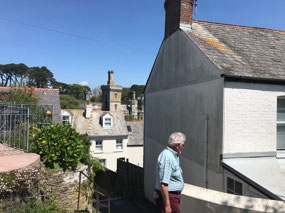

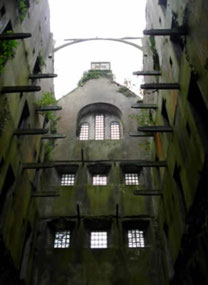



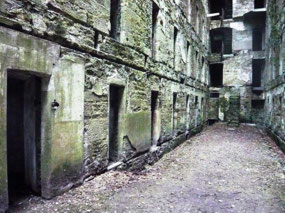
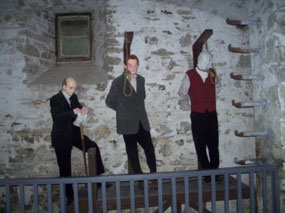
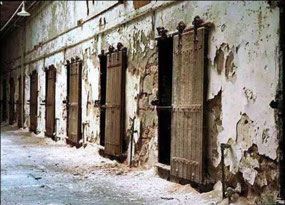

2025-05-22